Sources: AECOM website, WSP website, Tekla website, “Design of Chenab Bridge in India” (research paper)
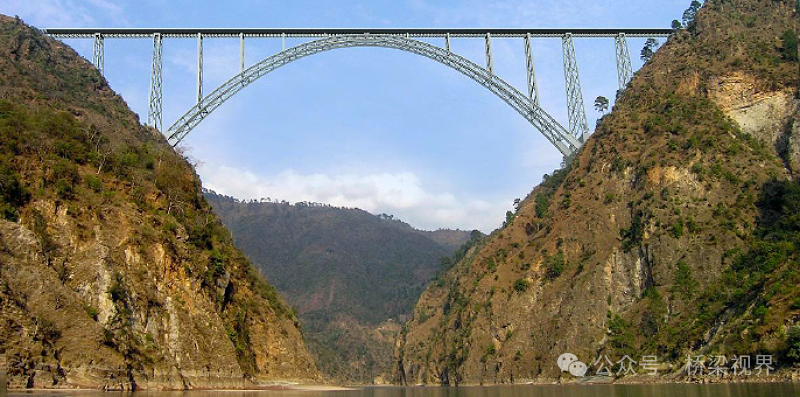
The Chenab Railway Bridge is a steel arch bridge located in the Union Territory of Jammu and Kashmir, India. It spans the Chenab River, connecting the Jammu region with Reasi district. The bridge’s main span reaches 460 meters, with a total length of 1,315 meters. Its highest point is 359 meters above the riverbed, surpassing the height of the Eiffel Tower.
The bridge’s design and construction process involved world-renowned companies such as AECOM, WSP, and COWI, as well as institutions like the Indian Institute of Science Bangalore, the Defence Research and Development Organisation of India, and the Geological Survey of India. The project cost exceeded 15 billion rupees, approximately $190 million USD.
Surrounding Geography
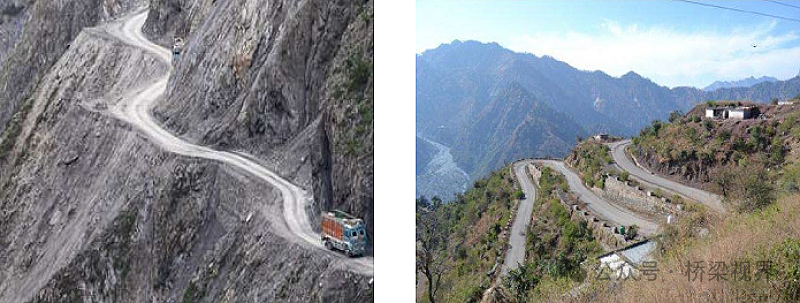
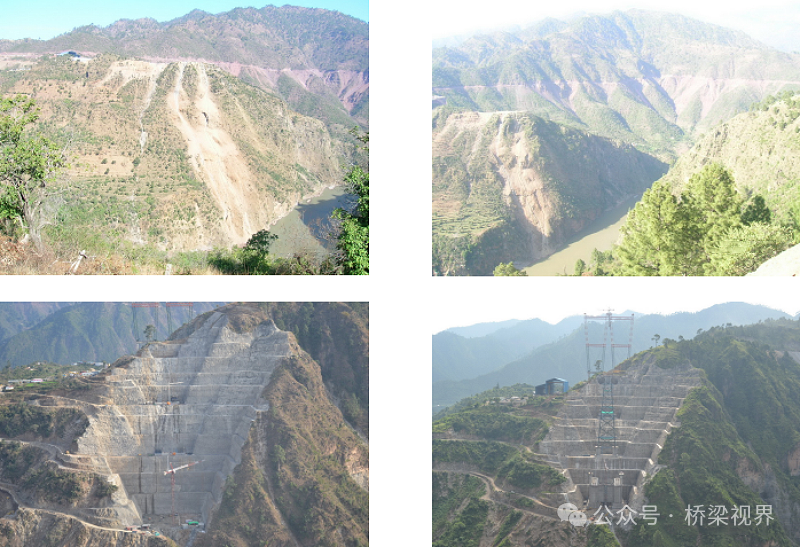
The Chenab Railway Bridge is situated in a mountainous region at the western edge of the southern Himalayan foothills, characterized by deep valleys. The geographical features posed significant challenges to the bridge’s design and construction. Narrow mountain roads required engineers to overcome adverse factors such as frequent seismic activity, strong winds, and complex geological structures.
The mountainous terrain demanded high standards for the safe operation of cable cranes and the erection of large-span steel arch trusses. The bridge also had specific design requirements, including high redundancy for the steel arch to resist seismic activity, wind, and blast loads. The reinforced concrete arch bridge structure was designed with a 120-year lifespan, capable of withstanding wind speeds up to 266 km/h and earthquakes up to magnitude 8 on the Richter scale.
Bridge Design
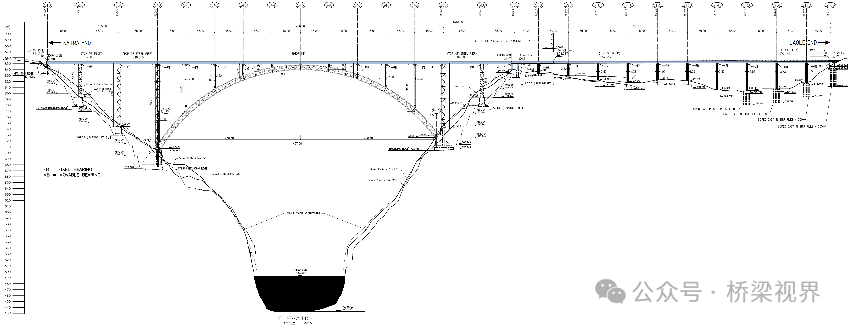
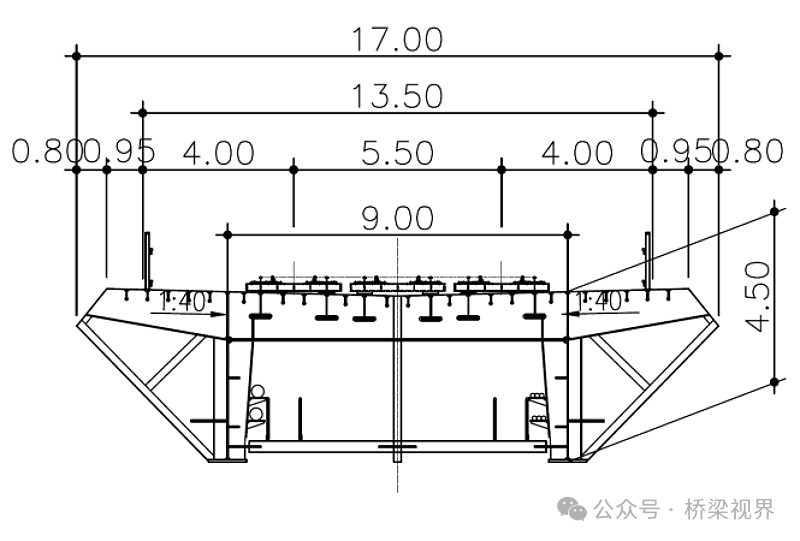
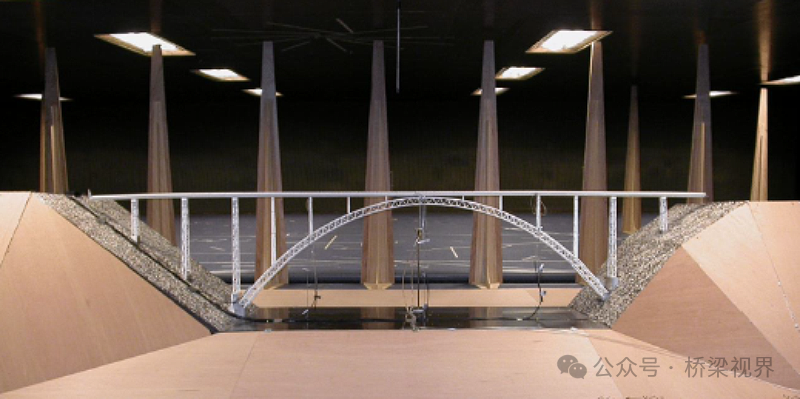
The initial design oscillated between an arch bridge and a cable-stayed bridge. After careful consideration of aesthetics, economics, local requirements, and ease of material transportation, the final design was a long-span single-arch steel bridge with approach viaducts on both sides. The main arch span is 467 meters (linear) and 550 meters (curved). The bridge features a twin-rib arch design, with concrete-filled sealed steel boxes serving as the steel truss. The structure is supported by main cables connecting bridge towers at both ends, designed by VCE Consult ZT-GmbH from Austria. The bridge can support train speeds up to 100 km/h.
To ensure design safety, Indian national standards referenced British Standards (BS), International Union of Railways (UIC) standards, as well as limit state design, wind tunnel testing and wind load standards, site-specific seismic spectrum standards, long welded rail standards, fatigue inspection standards, deformation limit standards, redundancy standards, blast-resistant standards, and railway load standards.
The Chenab River valley experiences frequent high-pressure winds. The design team conducted most wind tunnel tests and airflow analyses at the Norwegian Energy Technology Research Center, including static power coefficients and blast impact effects.
Engineering consultants: WSP, Leonhardt Andra and Partners; Construction guidance: AECOM; Foundation and slope engineering: COWI; Steel supplier: Essar Steel; Bearing supplier: Mageba.
BIM

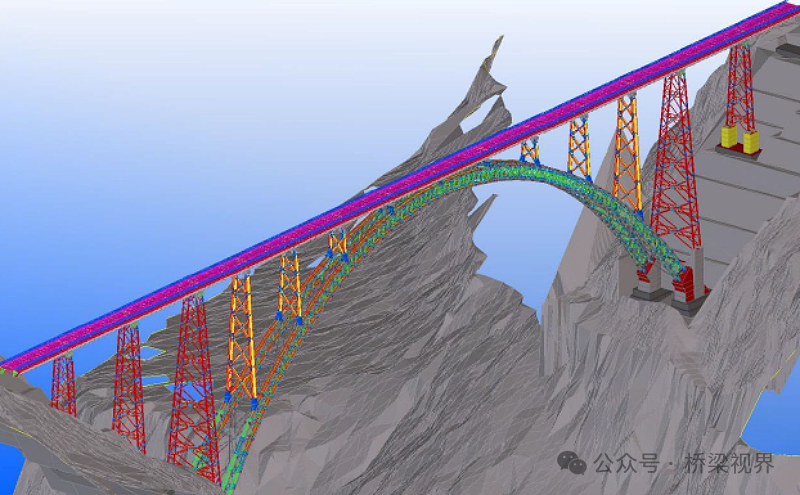
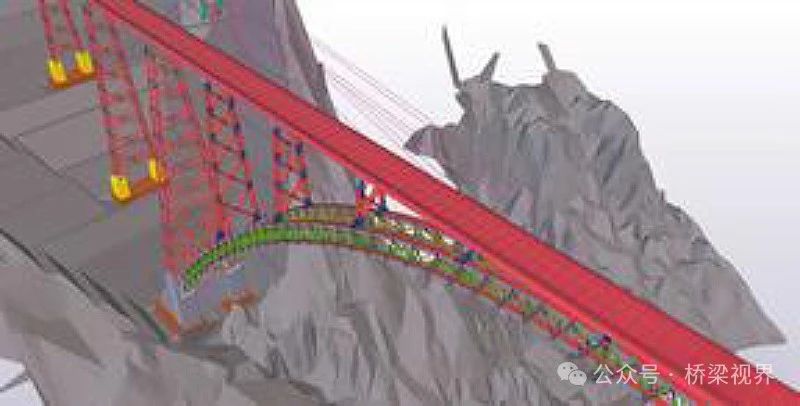
The design process reaffirmed the necessity and capability of BIM software. The team led by WSP used BIM and Tekla Structures software to design all steel structures and produce numerous drawings, including weld details. All connections are bolted, using approximately 600,000 bolts. Each design stage included evaluation phases to minimize rework requirements.
Bridge Construction
The project began in 2005 but was suspended in 2008 due to extreme construction difficulties. The Indian Railways Board reviewed the entire project, and a new design scheme was approved in July 2012. Erection work had to be halted when wind speeds exceeded 50 km/h for safety reasons, causing multiple delays.
In November 2017, the bridge slopes and foundation supports were completed. The steel arch was closed in March 2021, and deck installation was finished in August 2022. The bridge underwent its first comprehensive trial run in June 2024. The actual construction period spanned approximately 14 years.
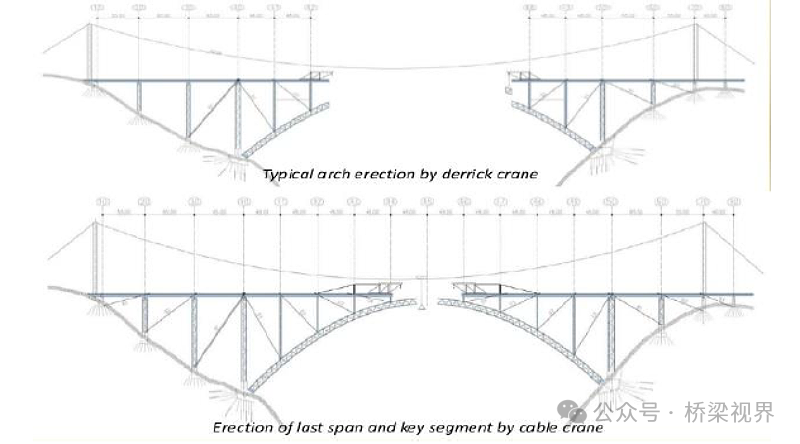
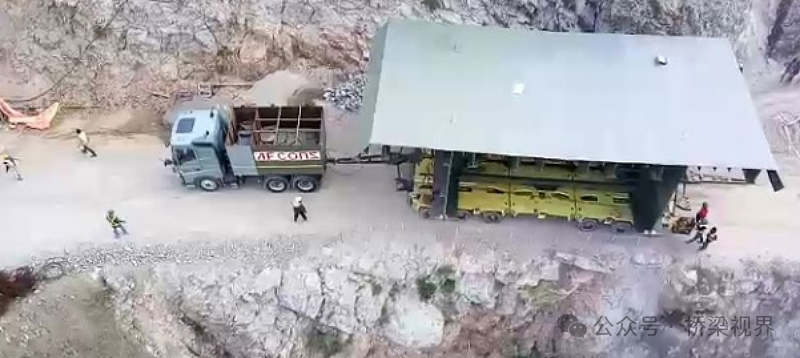
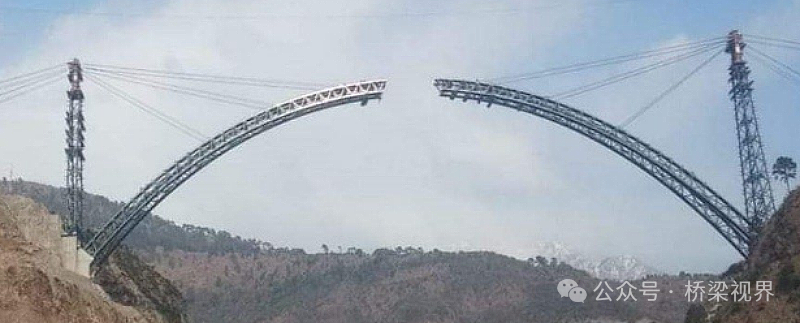
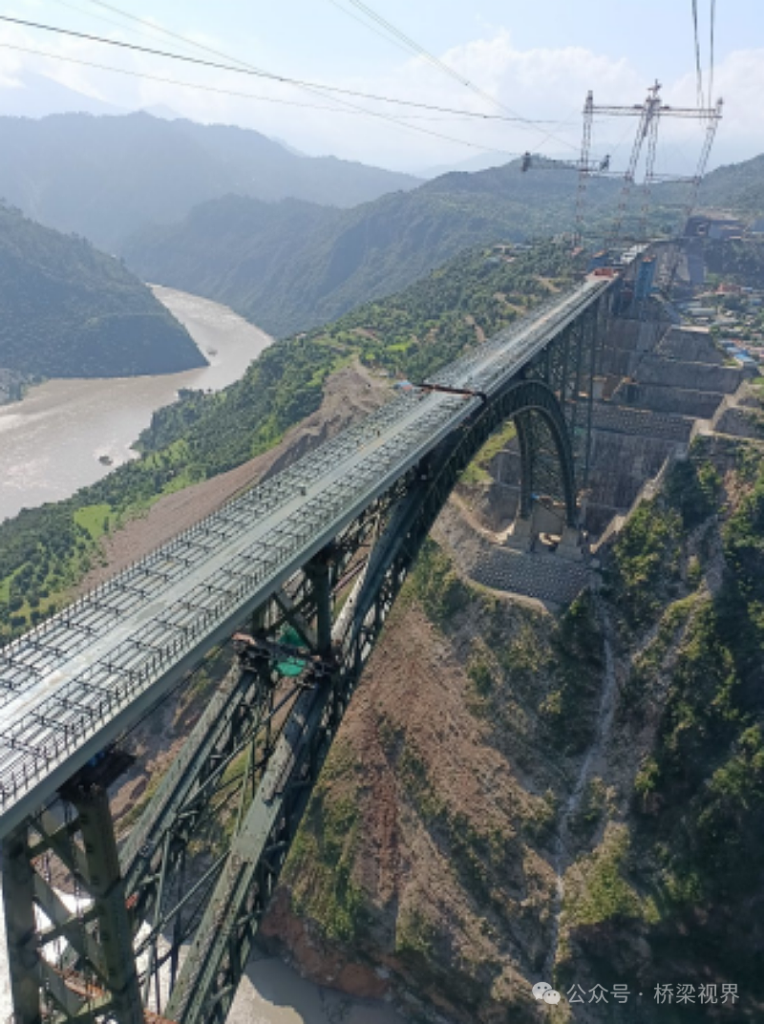
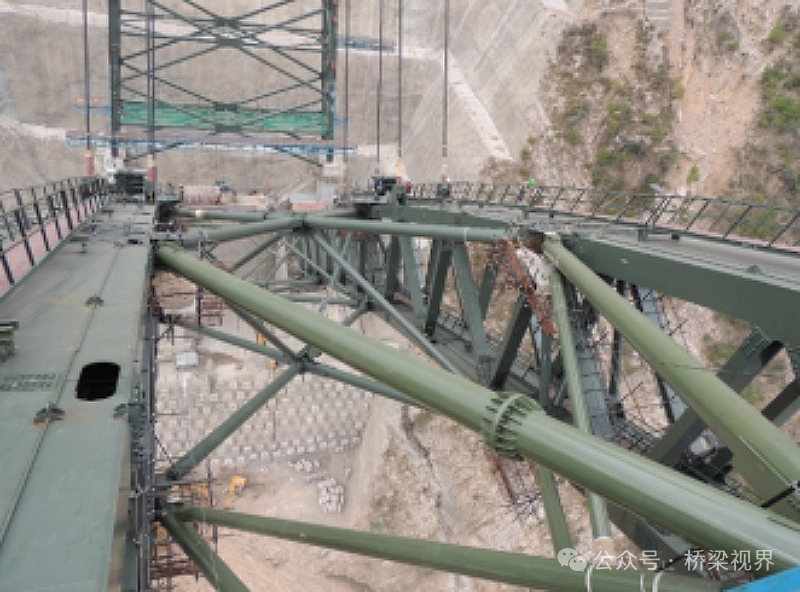
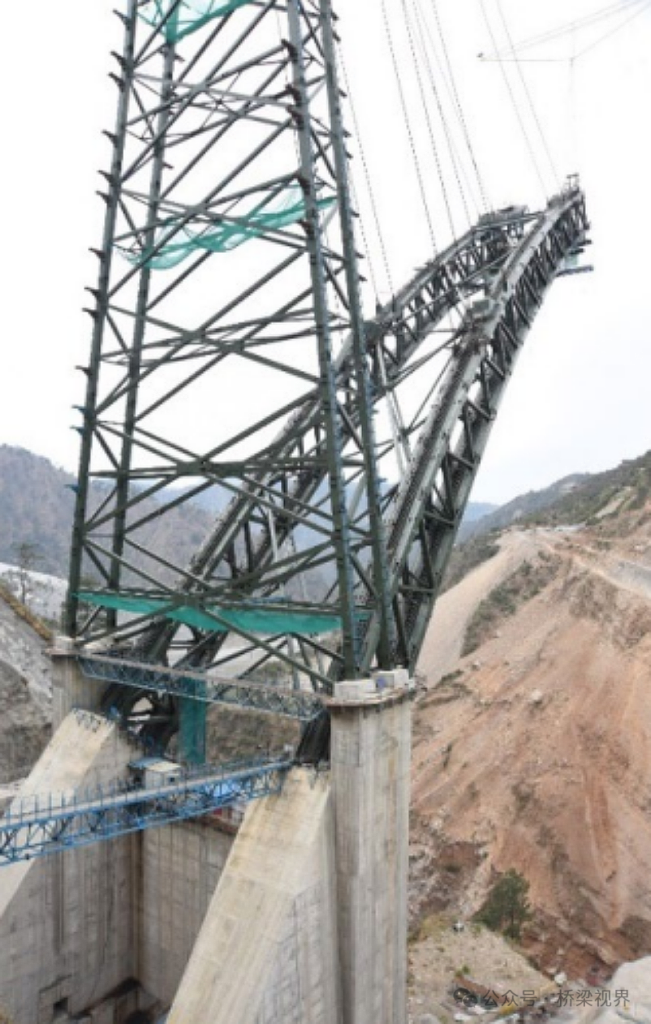
Editor’s note: The completion of the Chenab Railway Bridge undoubtedly demonstrates human ingenuity in conquering nature. However, it objectively challenges the geopolitical balance in the Jammu and Kashmir region, drawing high attention from neighboring countries. The bridge concept dates back 30 years, and its completion will significantly enhance the mobility and logistical efficiency of Indian troops. It will also promote the development of a series of road tunnel projects in the surrounding area, closer to the India-Pakistan and India-China borders, aiming to balance China’s influence in South Asia.
Considering the region’s high risk of terrorist attacks, the Defence Research and Development Organisation (DRDO) of India participated in the bridge construction. The bridge incorporates 63mm thick special blast-resistant steel plates and reinforced concrete capable of withstanding explosions. Additionally, the bridge is equipped with an aerial safety early warning monitoring system, further enhancing security measures. These initiatives aim to ensure the bridge’s safe operation while elevating its strategic importance.
